Discover Kiteboarding Adventures in the Mariana Islands
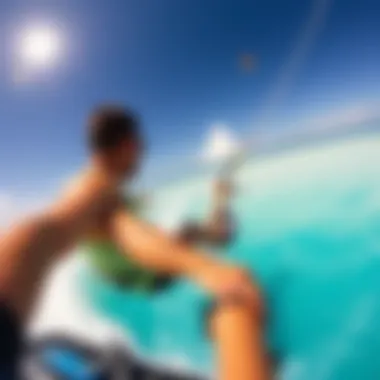
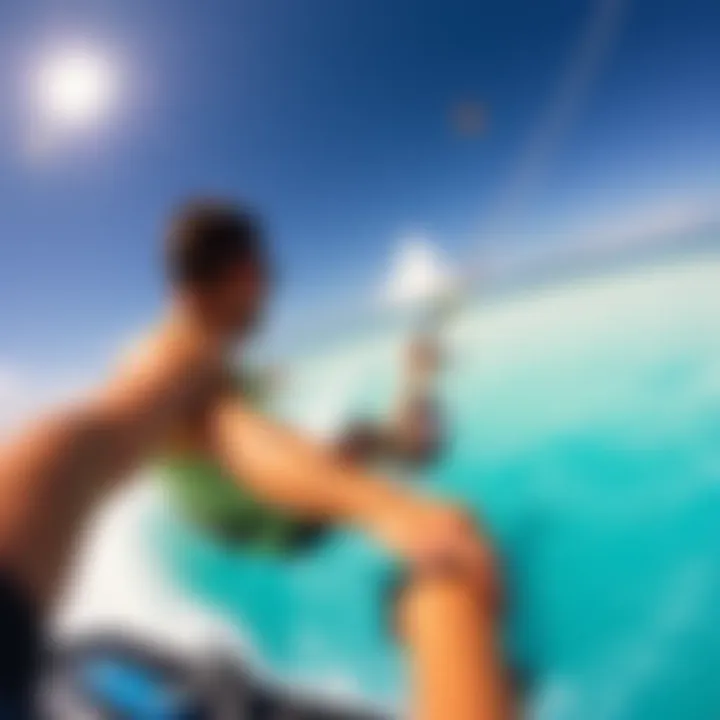
Intro
The Mariana Islands, a stunning archipelago located in the western Pacific Ocean, offers a unique blend of culture, breathtaking landscapes, and thrilling adventure. For kiteboarding enthusiasts, these islands are not just another destination; they are a .hidden gem. The pristine waters and consistent winds create an ideal environment for both beginners and experienced riders alike.
This guide walks you through the must-know aspects of kiteboarding in the Mariana Islands, highlighting everything from the essential gear and the cultural vibrancy of the islands, to safety practices and advanced techniques that help you make the most of your time on the water. It’s about learning to ride the waves while connecting with the local environment and community.
Whether you're a novice hoping to catch your first gust or an advanced kiteboarder seeking the latest tricks to perfect your craft, this guide sheds light on what you need to enhance your experience. So grab your board and prepare to embark on an unforgettable journey through the breathtaking beauty of the Mariana Islands.
Gear and Equipment
Essential Kiteboarding Gear for Beginners
When starting in kiteboarding, it’s crucial to invest in the right equipment to ensure a safe and enjoyable experience. Here’s a rundown of essential gear:
- Kite: Choose a kite that fits your skill level and the wind conditions. Beginners typically benefit from a larger kite for more lift and easier control.
- Board: A wide and stable board is best for novices. Many start with a twin-tip board, which allows riding in both directions.
- Harness: A comfortable harness will help you maintain control without straining your arms. Make sure it fits snugly and is easy to adjust.
- Safety Gear: Never overlook a good helmet and impact vest. These will offer vital protection, particularly in challenging conditions.
Advanced Equipment for Experienced Riders
For those who have already mastered the basics, the right equipment can take your skills to new heights:
- High-Performance Kites: Advanced riders often prefer smaller kites for speed and maneuverability. Look for kites that reflect your riding style, whether it’s wave, freestyle, or racing.
- Specialized Boards: Depending on your type of riding, you might want a directional board for waves or a lighter freestyle board for tricks.
- Control Bar and Lines: Upgrading to a more responsive control bar can make a noticeable difference in your riding experience. Ensure your lines are in good condition for maximum control.
Techniques and Tips
Safety Practices for Kiteboarding
The beauty of kiteboarding comes with its risks. Here are vital safety practices to bear in mind:
- Check Wind Conditions: Always assess the wind speed and direction before heading out. Winds between 10-20 knots are generally ideal for beginners.
- Buddy System: Never kite alone, especially if you're just starting. Having a buddy around enhances safety and makes it more enjoyable.
- Know the Rules: Familiarize yourself with local regulations regarding kiteboarding and adhere to all guidelines to ensure the safety of yourself and others.
Training Techniques to Improve Your Skills
To elevate your kiteboarding skills, try incorporating the following techniques:
- Practice Jump Techniques: Focus on your take-off and landing. Start with small jumps and gradually increase height as you gain confidence.
- Board Riding Skills: Work on carving through the water and practicing turns. The more you ride, the more your skills will improve.
- Join a Kiteboarding Community: Engaging with local kiteboarders offers a wealth of knowledge and support and can even help in spotting opportunities for organized events or competitions.
"Success in kiteboarding, as in many sports, is about consistency and perseverance. Stay focused on your progression, and the thrills will come in time."
Intro to the Mariana Islands
The Mariana Islands, a chain of volcanic islands in the western Pacific Ocean, present an enticing mix of natural beauty and adventure, making it a prime spot for kiteboarding. In these tropical waters, enthusiasts of all skill levels can find exciting conditions that cater to their sport. But kiteboarding in the Mariana Islands is not just about the thrill of the ride; it also provides an opportunity to immerse oneself in the rich culture and history of the region while enjoying stunning landscapes.
Understanding the geographical and historical context of these islands is essential for kiteboarders who wish to make the most of their experience. From wind patterns to the best kiteboarding spots, knowledge of the islands enhances the overall adventure. This introduction sets the stage, shedding light on what makes the Mariana Islands a remarkable destination for kiteboarding enthusiasts.
Geographical Overview
The Mariana Islands consist of 15 islands, with Guam being the largest and most populous. The islands were formed by volcanic activity, presenting a diverse topography that varies from rugged cliffs to sandy beaches. The surrounding waters are home to some of the healthiest coral reefs in the world, which contribute to vibrant marine life.
The climatic conditions in the Mariana Islands favor outdoor sports. Kiteboarders will find trade winds that blow steadily, especially from December through April. The average temperature hovers around a warm 80-85°F, providing comfortable conditions for all water activities.
"The Mariana Islands are not just a paradise for kiteboarders, but they are a haven for those seeking a connection with the ocean and a chance to feel the wind beneath their sails."
Additionally, the islands are known for their crystal-clear waters. These turquoise hues not only present stunning views but also make for safe and enjoyable kiteboarding conditions. The fusion of nature’s beauty and adventure awaits all those who dare to explore.
Historical Context
The history of the Mariana Islands is as rich as its waters. The islands have been inhabited for thousands of years, originally settled by the Chamorro people. Their deep-rooted connection to the land and sea can be observed in local traditions and practices, which greatly influence the culture of the region today.
In the late 19th and early 20th centuries, the islands changed hands between various colonial powers. The influence of these different cultures is evident in the architecture, festivals, and cuisine. Specific events, such as the annual Liberation Day celebration in Guam, highlight the resilience and spirit of the local community.
For kiteboarders, understanding the historical context can enhance the experience. Local stories add depth to the beauty and excitement of each kiteboarding spot, creating a richer connection to the islands.
When visiting the Mariana Islands, kiteboarders embark on more than just a physical adventure; they enter a landscape imbued with a rich tapestry of history and culture. This interplay of geography and history makes the Mariana Islands a unique destination for both kiteboarding and cultural exploration.
Kiteboarding in the Mariana Islands
Kiteboarding in the Mariana Islands offers an exhilarating experience for both novice and seasoned riders. This area is distinguished by its pristine waters and reliable winds, making it an appealing hub for adventure sports enthusiasts. It really stands out as a kiteboarding destination thanks to its warm climate and diverse settings that cater to various skill levels. Furthermore, the unique geography forms an engaging backdrop for kiteboarding, enabling enthusiasts to enjoy scenic views while gliding over the ocean.
Ideal Locations for Kiteboarding
Saipan
Saipan is often the go-to spot for kiteboarders in the Mariana Islands. The island boasts a stunning variety of beaches, including the renowned Micro Beach, where the wind regularly creates ideal conditions for kiteboarding. One of the key characteristics of Saipan is its consistent trade winds, typically blowing at 15-25 knots, which can provide thrilling rides for those who enjoy speed.
Moreover, Saipan's tropical waters are known for their clarity and depth, allowing for a more enjoyable experience on the water. However, the shallow reefs can be tricky for newcomers, so it’s essential to have a good understanding of the area before diving in. In summary, Saipan is celebrated as a kiteboarding paradise, making it a beneficial choice for those eager to explore the islands.
Tinian
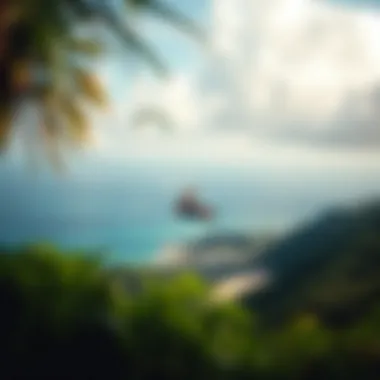
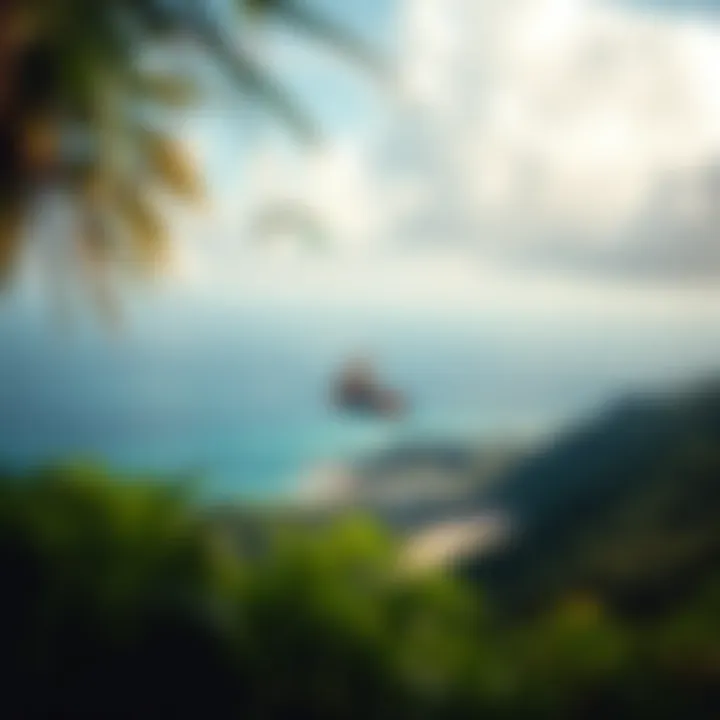
Over in Tinian, kiteboarders can discover a tranquil alternative with plenty of wide-open spaces and fewer crowds. The island features breathtaking beaches like Ladder Beach and Tinian Town Beach, which offer flat water and steady winds. Tinian’s key characteristic lies in its less commercialized environment, providing a more laid-back experience. This setting allows adventurers to connect deeply with nature.
While the conditions are generally favorable, Tinian's wind patterns may not be as predictable as Saipan's, meaning kiteboarders should keep an eye on local forecasts. Tinian serves as an exceptional choice for those seeking a quieter kiteboarding experience amid stunning scenery.
Rota
Rota, often referred to as the “Friendly Island,” stands out with its unique lagoons and offshore reefs, which cater to various kiteboarding styles. Rota’s natural beauty plays a crucial role, making it a captivating site for adventurers. With beaches like Evil Beach and Coral Beach, kiteboarders can enjoy more varied conditions, from flat water to wave riding.
The island is less developed than Saipan and Tinian, meaning more untouched beauty and fewer people, allowing for a more intimate experience. However, since Rota is smaller, facilities might not be as abundant compared to larger islands, which could be a consideration for some travelers. Overall, Rota embodies a blend of excitement and solitude, making it a worthy choice for kiteboarding enthusiasts.
Best Time to Visit
Weather Patterns
Understanding weather patterns is crucial for kiteboarding in the Mariana Islands. The region experiences a tropical climate, with temperatures averaging between 78°F to 88°F. The dry season from December to April is often regarded as the best time for kiteboarding due to the stable weather and lack of typhoons during these months. The warm sun combined with clear skies can make for a perfect day on the water.
However, during the wet season from May to November, the region can see heavy rains and thunderstorms, which can affect kiteboarding plans. Therefore, planning trips around the dry season can enhance the overall kiteboarding experience, ensuring consistency and enjoyment.
Winds and Tides
Winds and tides play an essential role in kiteboarding strategy, particularly in the Mariana Islands. The trade winds, mainly from the east, are generally reliable, providing favorable conditions for kiteboarding. Consistent winds between 15 and 25 knots are often anticipated, but it’s vital for kiteboarders to have a sharp eye on local wind conditions and tide charts, which can help in predicting the best times to hit the water.
On the downside, tidal movements can create strong currents, especially in specific areas. Newer riders need to remain vigilant about these conditions to avoid potential hazards. Overall, understanding the winds and tides can significantly impact kiteboarding success and safety in the Mariana Islands.
Cultural Landscape of the Islands
The cultural tapestry of the Mariana Islands is a vibrant blend of ancient traditions and modern influences. This interplay is crucial for understanding not just the islands themselves but also the experience awaiting kiteboarders who visit. Engaging with local customs, festivals, and cuisine can significantly enrich a kiteboarding trip. It’s about more than just riding the waves; it’s about immersing oneself in the living culture that makes the islands unique.
The significance of the cultural landscape lies partly in its reflection of the islands’ history and the diverse communities that have settled here over centuries. Each island has its own distinct traditions that connect residents with their past while inviting visitors to participate in their celebrations and daily routines.
Local Traditions and Festivals
The Mariana Islands are known for their lively festivals that showcase local customs and community spirit. From the lively Fiesta de San Juan in Saipan to the Tinian Hot Pepper Festival, each event is an invitation to experience the soul of the islands.
Attending these festivals not only offes a chance to engage with local kiteboarders but also creates an opportunity to forge connections with the community. Understanding these traditions can deepen your adventure, adding layers to the experience of kiteboarding as you find common ground through shared festivities.
Being part of a local celebration can be a humbling encounter, allowing you to witness traditional dances, listen to local music, and taste foods that reflect the unique heritage of the islands. The joy and pride of the islanders during these events can be infectious, providing valuable insights into their way of life.
Cuisine and Dining Experiences
When it comes to meals, the Mariana Islands boast a rich culinary tradition influenced by diverse cultures including Chamorro, Filipino, and even American cuisines. This mix offers kiteboarders a memorable gastronomic journey.
Local Seafood
One cannot talk about the cuisine of the Mariana Islands without mentioning local seafood, a cornerstone of both recreation and sustenance. The waters surrounding the islands are teeming with a variety of fish, such as marlin, tuna, and barramundi. These aren't just meals; they are part of the lifestyle here.
The freshness of local seafood stands out as a key characteristic, often caught the same day it reaches your plate. Diving into a dish of kuåf, a local marinated dish, provides not just nourishment but also a taste of the sea that surrounds the islands. It's not uncommon to find fishermen casually selling their catch at local markets, bringing the community together.
Eating local seafood can be not just nourishing but also environmentally friendly, as many of these practices emphasize sustainable fishing. This aspect aligns well with the growing concerns for the ocean’s health, making seafood a popular choice among conscientious travelers.
Traditional Dishes
Traditional dishes such as red rice or lechon, a whole roast pig, are emblematic of the islands’ cultural significance and communal gatherings. These dishes convey history and a sense of belonging. Preparing and sharing them is often a communal activity, reinforcing community bonds.
The preparation of these traditional dishes varies across the islands, which broadens the culinary experience. Whether it’s the aroma of seasoned meats or the spiced grains of local rice, each bite offers a whisper of history and local lore. While these foods may be rich and indulgent, they also encapsulate the warmth and hospitality of the islanders.
In summary, the cultural landscape of the Mariana Islands is not just a backdrop for kiteboarding; it's an integral part of the experience. By exploring local traditions, festivals, and cuisine, kiteboarders can connect on a deeper level with this stunning destination. Engaging with the islands' culture transforms an adventure into a holistic journey—one that is as enriching as the thrill of catching the perfect wind on the water.
Safety Considerations for Kiteboarding
Kiteboarding can be an exhilarating experience, but it doesn't come without its risks. Prioritizing safety ensures that your time on the water is not only enjoyable but also secure. When kiteboarding in the Mariana Islands, specific safety elements need your attention. Knowing local conditions and being well-prepared can save your life or lead to a memorable experience without unnecessary hiccups.
Understanding Local Conditions
Identifying Hazards
Identifying hazards while kiteboarding can significantly impact your overall safety. In the Mariana Islands, various environmental challenges exist, such as strong currents and sudden shifts in wind speed. Not knowing how to spot these dangers can be the difference between a fabulous ride and an unfortunate accident. It’s crucial to keep your eyes peeled for obstacles, both above and below the water’s surface, like reefs and boats. This ability to anticipate hazards is especially important given the islands' diverse coastal features, which can change the conditions rapidly.
However, vigilance does not only involve keeping a lookout. Equipping yourself with local knowledge, such as what times are best to ride or what areas are typically crowded, is equally pivotal. This emphasizes the need to familiarize oneself with local kiteboarding community advice.
Navigating Weather Changes
Navigating weather changes is another critical component for anyone looking to kiteboard. Pacific weather can be unpredictable, with sudden storms capable of rolling in unexpectedly. Monitoring local forecasts before a session can help avoid dangerous conditions. It's smart to have weather apps handy that provide real-time data on wind direction and speed, as well as storm alerts.
The islands offer an array of microclimates, and often weather can shift dramatically within short distances. Many experienced kiteboarders recommend talking to local instructors before heading out or joining group sessions to learn firsthand about prevailing conditions. Ultimately, adapting to the weather means being cautious and flexible in your plans, ensuring that you stay safe while enjoying the thrill of kiteboarding.
Equipment Safety
Regular Maintenance
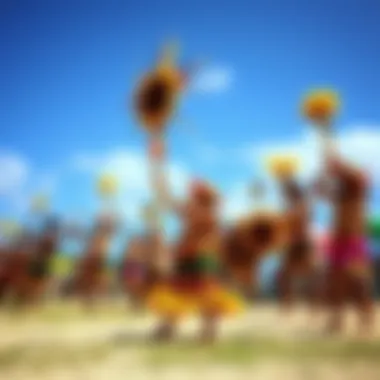
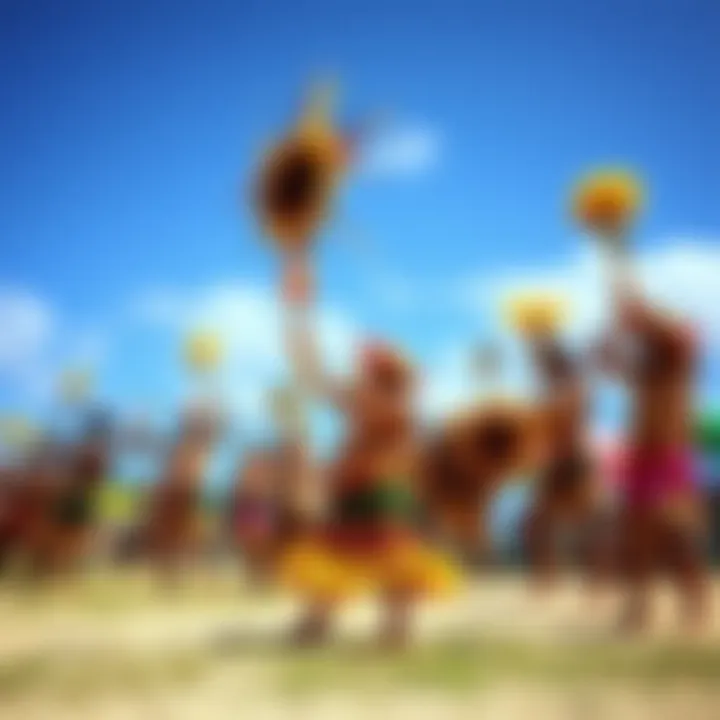
Regular maintenance of your kiteboarding equipment is vital for maximizing safety and performance. Over time, wear and tear can affect your gear, potentially leading to serious accidents. By being diligent in checking your kite, lines, and harness, you can significantly reduce the chances of equipment failure while out on the water. It’s prudent to inspect for frays or cuts, as well as to ensure the integrity of all components before hitting the waves.
A well-maintained kite keeps riders confident and focused, preventing unnecessary stress about equipment reliability. Take the time to learn the best maintenance practices, such as washing salty components to avoid corrosion and checking inflation systems for leaks. Adopting a routine equipment check before every session can save time and keep your kiteboarding experience hassle-free.
Using Proper Gear
Using the right gear can make all the difference in your kiteboarding adventure. From selecting the size of the kite to choosing a suitable harness, the correct equipment enhances safety, control, and comfort. Each kiteboarder comes with a unique set of needs based on skill level and location, making it necessary to understand what works best for you in varying conditions.
For instance, a beginner may favor a larger kite that can handle lighter winds, while an experienced kiteboarder might opt for a smaller kite designed for strong winds. Ultimately, your choice affects not just performance but also safety. Getting a fitting size and style suitable for the prevalent conditions of the Mariana Islands enhances your ride while mitigating risks.
In summary, navigating the exhilarating waters of the Mariana Islands as a kiteboarder comes with its array of challenges. Understanding the local conditions, performing regular checks on equipment, and ensuring you have the right gear can keep you on your board and out of trouble.
"The ocean stirs the heart, inspires the imagination, and brings eternal joy to the soul."
By prioritizing safety considerations, you're set to explore everything the islands have to offer without unnecessary concern.
Environmental Considerations
The beauty of the Mariana Islands is not just skin deep; it’s a tapestry woven with diverse ecosystems and breathtaking landscapes. Understanding environmental considerations is crucial for kiteboarders and adventure seekers alike. By grasping the delicate balance of these ecosystems, enthusiasts can enjoy kiteboarding while ensuring the preservation of the islands' unique flora and fauna. This knowledge helps in fostering a greater appreciation for nature and minimizes the impact of recreational sports on the environment.
Biodiversity of the Mariana Islands
The Mariana Islands boast an impressive array of biodiversity, making them a hotspot for ecologists and nature lovers. The islands are home to numerous species of plants and animals that find sanctuary in their unique habitats. From towering limestone cliffs to lush tropical forests, the environmental variance offers a wide range of habitats.
In the waters surrounding these islands, the biodiversity extends underwater. Coral reefs, vibrant with colorful marine life, serve as carbon sinks and provide shelter for countless species. These reefs are not just a sight to behold but also play an essential role in maintaining the ecological health of the marine ecosystems in the region.
"Healthy coral reefs are like nature's buffers. They protect shorelines, support local wildlife, and draw in tourists who seek the adventure of snorkeling and diving."
Conservation Efforts
Conservation is a pressing matter in the Mariana Islands, particularly regarding the preservation of its coral reefs and unique ecosystems. The efforts hinge on raising awareness among locals and tourists alike, promoting sustainable practices that help preserve these natural gems.
Coral Reef Protection
Coral reef protection initiatives are a foundational aspect of conservation efforts in the Mariana Islands. The reefs here are delicate structures that are critical for marine life. By implementing protective measures, such as regulating fishing practices and controlling pollution, these initiatives aim to enhance the resilience of coral ecosystems. One of the key characteristics of coral reef protection is creating marine reserves. These designated areas allow marine life to thrive without human interference, effectively serving as safe havens.
A significant advantage of these measures is the replenishing of fish populations, which can indirectly benefit kiteboarding experiences by sustaining healthy marine environments. However, challenges remain, as threats like climate change and invasive species continue to endanger these vital ecosystems.
Sustainable Tourism Practices
Sustainable tourism practices are gaining traction in the Mariana Islands as a means to balance enjoyment and preservation. These practices encourage visitors to engage with the islands' natural beauty while responsible approaches aim to mitigate adverse effects on the environment. Highlighting the importance of local culture and nature, sustainable tourism practices often incorporate educational elements, informing tourists about the significance of the ecosystems they are enjoying.
For instance, initiatives promoting eco-friendly accommodations and activities ensure tourists can explore without leaving a heavy footprint. A unique feature of this approach includes promoting awareness of local traditions, which fosters respect for both the environment and the island's heritage.
The advantages are that sustainable practices not only benefit the environment but also contribute positively to local economies. Still, travelers are reminded that these efforts need continuous commitment and awareness to truly make a lasting impact.
Travel Logistics
Traveling to the Mariana Islands requires careful planning, especially for kiteboarders eager to take advantage of everything these beautiful islands have to offer. Understanding the logistics surrounding transportation and accommodation can greatly enhance the overall kiteboarding experience. This section will outline essential details about how to reach the islands and where to stay, helping you make the most of your adventure.
Getting to the Mariana Islands
Flights and Ferry Services
When it comes to reaching the Mariana Islands, the most common option is flying. Major airlines, such as United Airlines and Philippine Airlines, provide flights from various hubs in the United States and Asia. The unique layout of the islands means that direct flights aren’t always available; travelers may need to take connecting flights through Guam or other locations.
Moreover, ferry services are available between some of the islands, particularly from Saipan to Tinian and Rota. This becomes a great way to explore more than one stop during your kiteboarding trip. The ferry system offers a wonderful chance to soak in the scenic views of the islands while enjoying a gut meal.
Key Points
- Direct Flights: Limited, often requiring connections.
- Ferry Services: Explore nearby islands seamlessly.
However, it's worth noting that ferry schedules can vary, so it's wise to check times ahead of traveling. Always factor in the transfer times to avoid a tricky situation, especially if you have tight kiteboarding schedules.
Visa Requirements
Visa regulations can vary based on your nationality. For many travelers, entering the Mariana Islands is relatively straightforward. Citizens from the United States can enter without a visa, given that the islands are a U.S. territory. However, for international kiteboarders, securing a tourist visa may be necessary.
The application process can be a bit lengthy, thus requiring background checks and documentation detailing the purpose of travel. This requirement can seem cumbersome; however, it serves as an aspect of entering a unique region enriched with its own culture and history. Always ensure you have your paperwork in order well before departure to avoid last-minute hiccups.
Accommodation Options
Finding a place to stay can have a massive impact on your kiteboarding experience in the Mariana Islands. The area offers a mix of accommodation types, from luxury resorts to charming vacation rentals.
Hotels and Resorts
Hotels and resorts in the Mariana Islands often boast prime beachfront locations. These establishments cater to the adventurous spirit, providing amenities such as kiteboarding gear rentals and expert instructors. A standout option is the Hyatt Regency Saipan, known for its stunning ocean views and top-notch services.
Staying in upscale hotels allows for immediate access to activities and a chance to mingle with fellow adventurers. Yet, they can be pricier, making it important to stay on the lookout for deals and off-peak rates.
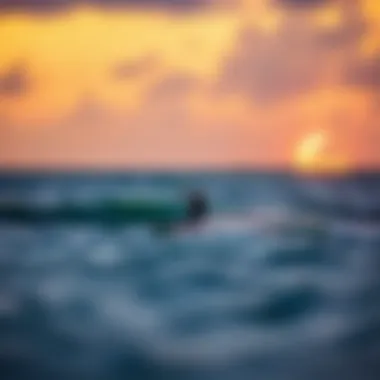
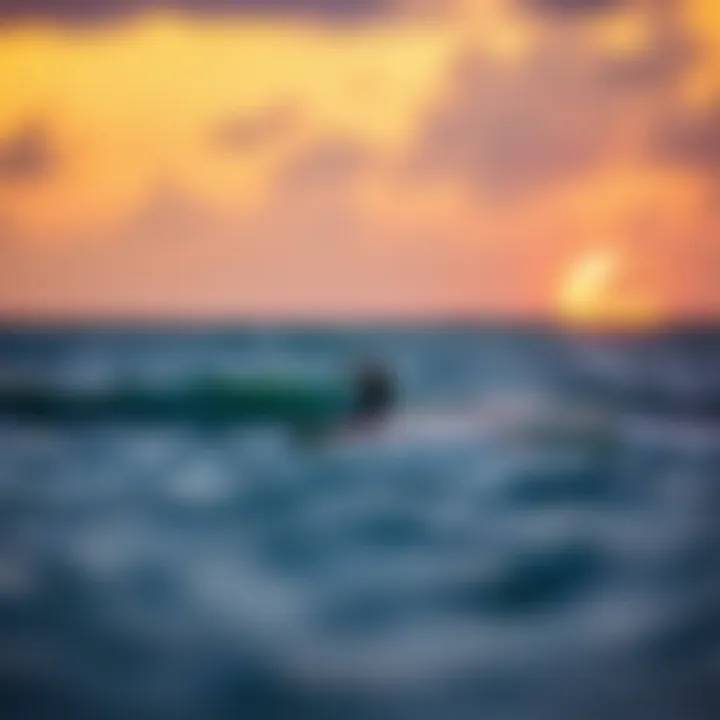
Vacation Rentals
Vacation rentals offer a homely touch to your stay, often at a lower cost compared to hotels. Many local owners rent out condos and homes, allowing you to fully immerse yourself in the island lifestyle. These rentals often come equipped with kitchens, giving you the flexibility to prepare meals after long days of kiteboarding.
An appealing feature of vacation rentals is the privacy they provide, ideal for those wishing to unwind completely after a day on the water. However, it's vital to research the properties and choose the ones that suit your comfort needs and proximity to kiteboarding spots.
In summary, thorough travel logistics planning—covering transportation and accommodation—is essential for kiteboarding enthusiasts heading to the Mariana Islands. By aligning your travel arrangements with your adventure goals, you can unlock a seamless experience, enabling you to revel in the waves and winds of these picturesque locales.
Experiencing the Islands Beyond Kiteboarding
Delving into the realm beyond kiteboarding is not merely a diversion; it's a chance to grasp the full richness of the Mariana Islands. While kiteboarding often takes the spotlight for its exhilarating thrills, the islands offer a multitude of experiences that can redefine a visit. By stepping away from the ocean breeze and colorful kites, one can uncover the natural beauty, cultural heritage, and thrilling adventures that the islands host.
Incorporating experiences like hiking and marine exploration into your itinerary enhances your trip. It opens doors to new perspectives and connects you deeper with the environment. Those who are passionate about kiteboarding will find these elements not only refreshing but also rewarding. Nature and culture enrich bow-to-stern adventures, creating a fuller picture of the Islands.
Nature and Hiking Trails
Lacing up your boots and heading into the lush landscapes of the Mariana Islands proves vital for any adventurer. The islands offer a range of hiking trails that vary in difficulty and scenic views. Whether you're a seasoned trekker or a casual walker, the rich flora and fauna make for an enchanting experience. Trails meander through dense forests, offer glimpses of breathtaking cliffs, and occasionally reveal hidden waterfalls.
These hikes can make for a nice change of pace from the adrenaline of kiteboarding. Plus, you might just encounter locals who share stories, revealing the islands' history firsthand. Pushing further allows for more intimate encounters with the unique biodiversity, making your visit all the more memorable.
"The deeper you roam into nature, the more vibrant the colors of adventure become."
Marine Activities and Exploration
Exploring the waters around the Mariana Islands is nothing short of paramount for any outdoor enthusiast. From snorkeling to diving and boat tours, each underwater adventure brings forth a revelation of beauty and biodiversity.
Snorkeling and Diving
Snorkeling and diving in the Mariana Islands unveil an underwater wonderland that captivates even the most seasoned adventurers. The reefs here shelter an array of marine life, including colorful fish, intricate coral formations, and even the occasional sea turtle gliding by.
One notable aspect is that the visibility is often exceptional, allowing for remarkable observations without the need for deep dives. For many, this accessibility makes snorkeling a preferred choice, creating a bridge between comfort and adventure. However, divers will appreciate the chance to descend into deeper waters where shipwrecks and vibrant ecosystems await exploration.
These activities not only complement kiteboarding but also encourage environmental stewardship. The exploration of these marine environments leads to a better understanding of their fragility. Respecting and preserving these underwater ecosystems becomes vital by sharing and reliving intimidating moments underwater with others.
Boat Tours
Boat tours add another layer of dimension to your Mariana Islands experience. Whether you’re leisurely cruising along the coast or embarking on a fishing excursion, these outings expand your horizons. The key characteristic of boat tours is the opportunity to cover a broader range of water than what might be possible through individual snorkeling or diving.
They often include guided experiences, which can enhance understanding of local ecology and culture. A unique aspect of these tours is their capability to reach less accessible spots, showing you secluded beaches and hidden coves. However, one must be discerning when choosing tours to ensure they respect the environment and support sustainable practices.
In summary, diving into experiences beyond kiteboarding not only fills your itinerary but also brings vitality to your perspective. Nature hikes recharge your spirit, while marine explorations capture the wonders lurking beneath the surface. Together, they make the Mariana Islands a richly layered destination that resonates long after the holiday sun fades.
Community and Networking Opportunities
Engaging with the local kiteboarding community in the Mariana Islands can significantly enrich your experience. More than just a sport, kiteboarding in these picturesque islands embodies a vibrant culture and a network of like-minded enthusiasts. Tapping into these connections can offer valuable insights, provide camaraderie, and foster a sense of belonging.
Connecting with Local Kiteboarders
Building relationships with local kiteboarders helps newcomers adjust more comfortably. It's a great way to pick up tips that you might not find in guidebooks. Imagine sitting down to share stories while sipping a coconut drink after a kiteboarding session, all while discussing the best times to catch those winds. Locals often have their finger on the pulse of changing weather and tide patterns. This first-hand knowledge can set you up for a productive day on the water.
To connect with local kiteboarders, consider visiting popular spots like Micro Beach on Saipan or the expansive beaches of Tinian. Many local kiteboarding shops, such as Saipan Kitesurfing, host meetups and training sessions. A quick scroll through platforms like Facebook or Reddit could also yield groups dedicated to the sport, where you can ask questions, share experiences, and plan outings. Taking the time to mingle with the natives not only improves your skills but also deepens your appreciation for the islands' rich sailing culture.
Participating in Events and Competitions
Significant events and competitions add another layer of excitement to kiteboarding in the Mariana Islands. They create an opportunity to witness the best talent, share in the local culture, and even participate, if you're up for the challenge. Events like the Saipan International Kiteboarding Festival attract kiteboarders from all over the globe, showcasing dazzling displays of skill and technique.
Engaging in these events is not just about the competition; it's about the camaraderie and shared passion for kiteboarding. Whether you're a spectator or a participant, the electric atmosphere can be inspiring. You'll meet fellow kiteboarding enthusiasts, exchange stories, and perhaps form friendships that bridge oceans.
Furthermore, entering a competition can serve as a push to enhance your skills. The thrill of competing against others can motivate you to train harder, learn new tricks, and gain advice from seasoned competitors. It’s this blend of competition and community that makes the kiteboarding scene in the Mariana Islands so appealing.
"The best thing about kiteboarding isn’t just the ride; it’s the people you meet along the way."
Ending and Recommendations
As we conclude this exploration of the Mariana Islands, it's clear that these tropical gems offer much more than just beautiful beaches and lush landscapes. For kiteboarding enthusiasts, the possibilities are vast and thrilling. By thoroughly understanding the local conditions, including the seasonal winds and tides, you’ll be fully equipped to make the most of your adventure.
Importance of Epilogue and Recommendations
This final segment serves as a vital guidepost—a compilation of insights gathered throughout the article. Highlighting the significance of safety, environmental consciousness, and the rich cultural experience, these recommendations aim to enhance the overall kiteboarding journey in the Mariana Islands.
Here are key takeaways:
- Safety First: Always prioritize safety. Weather can turn on a dime, so be prepared to assess the conditions. Regular equipment checks ensure your gear is ready for action.
- Respect the Environment: Engage in sustainable practices to protect the majestic landscapes and marine life. Simple actions like not disturbing wildlife and avoiding coral can make a difference.
- Immerse in Local Culture: Whether you’re partaking in local culinary treats or engaging with community events, understanding and appreciating the cultural fabric enhances your experience.
- Networking Opportunities: Meet fellow kiteboarders to share tips and tricks or join local competitions and events to stay in the loop.
To fully enjoy what the Islands have to offer, it’s essential to plan your trip with these recommendations in mind. The friendships made and memories created while gliding over the surface of these pristine waters will undoubtedly last a lifetime. Understanding the harmony between adventure and responsibility will enrich your relationship with these splendid islands.
"The real voyage of discovery consists not in seeking new landscapes, but in having new eyes." - Marcel Proust
Final Thoughts
The Mariana Islands stand as a prime example of nature’s grandeur, showcasing a kaleidoscope of experiences that cater to kiteboarders and adventure seekers alike. With the right preparation, both in terms of equipment and knowledge, individuals can ensure their kiteboarding endeavors go off without a hitch.
Visit Wikipedia for further reading on the islands' geography and cultural history. As you gear up for your journey, remember to look to the locals—they’re a fountain of information and support!
In essence, explore, respect, and enjoy all that the Mariana Islands offer. Happy kiteboarding!



